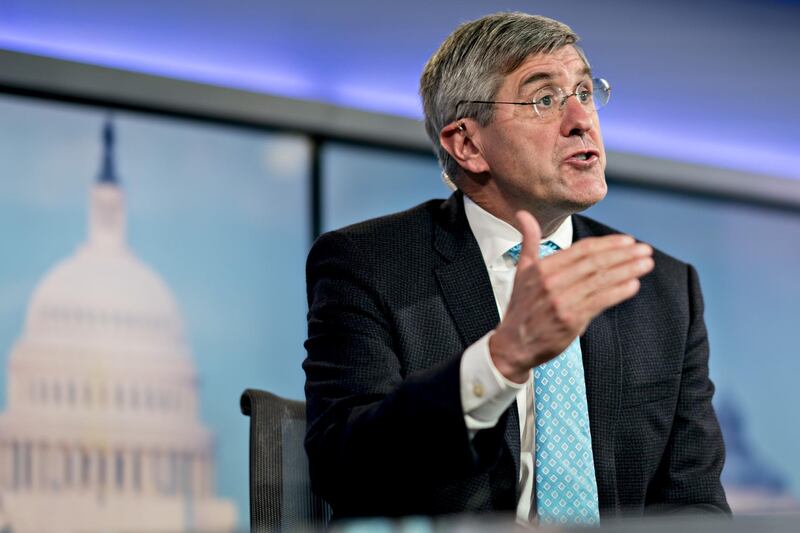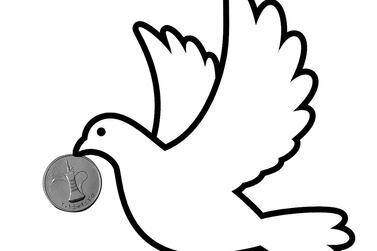It looks like a textbook example of political meddling with a central bank in an emerging market, except it is happening in the US.
President Donald Trump on Friday said he is nominating former campaign adviser Stephen Moore to be a governor of the Federal Reserve, potentially putting a political loyalist in lockstep with his view on juicing the economy into the middle of Fed deliberations heading into the 2020 election.
Mr Trump has gone from heckling Fed chairman Jerome Powell on Twitter to trying to give one of his allies a hand on the levers of US monetary policy. That is a shift by the president, who had previously opted for Republican establishment Fed candidates including Mr Powell, vice chairman Richard Clarida and vice chairman for supervision Randal Quarles.
As a Fed governor, a position that requires Senate confirmation, Mr Moore would be in a position to espouse his and the White House’s view that the economy can grow much faster without generating inflation.
"Sceptics in and out of the Fed still think sustained 3 per cent to 4 per cent growth is out of reach," Mr Moore, 59, co-wrote in a March 13 op-ed in The Wall Street Journal. "Nonsense".
In a TV interview, he called the Fed’s decision to raise rates in December a “substantial mistake” while saying that he did not want to be a disruptor and “I want to be somebody who can really help chairman Powell".
Mr Moore’s selection is just the latest step in Mr Trump’s effort to exert control over the US central bank, which was designed by Congress to be independent from short-term political pressure. After months of the president’s hectoring about interest-rate increases, Mr Powell in January put monetary policy on hold, then dined with him at the White House a few days later. On Wednesday, Mr Powell went further, effectively taking rate hikes off the table in 2019.
Under the threat of constant second-guessing by the president, and potentially soon working with a Trump cheerleader inside the building, Fed officials may find it increasingly difficult to stay focused on keeping the institution at a distance from politics. That is important because investors who purchase US Treasuries trust the Fed to ignore the wishes of politicians and do what it thinks is best for the economy in the long run.
Mr Powell’s strategy so far is aimed at avoiding a downturn requiring rate cuts and the emergency bond purchases that drew bipartisan scorn a decade ago, even if it means some people think he caved to a politician.
“In the eyes of the world, the Fed has turned quite political,’’ said Guy Lebas, chief fixed-income strategist at Janney Montgomery Scott, in Philadelphia. “But I don’t think anyone in the Eccles Building sits around and says ‘the president wants this, let’s deliver it',’’ he said, referring to the Fed’s Washington headquarters.
Fed spokeswoman Michelle Smith declined to comment.
Mr Powell is already in a precarious spot with interest rates.
The Fed’s policy rate is now set at 2.25 per cent to 2.5 per cent. During the last recession, the federal funds rate was cut about 5 percentage points. While that was an unusually deep contraction, 2.5 percentage points leaves little room to stimulate the economy out of a slump. With rates at zero, the Fed might need to restart purchases of longer-term Treasury securities. For different reasons, quantitative easing was unpopular with both Republicans and Democrats.
In 2011, Mr Moore attacked the second phase of the Fed’s quantitative easing programme.
“QE2 is just a fancy word for saying that what we’re doing right now is we’re monetising our debt,’’ he told a November 2011 conference in Palm Beach, Florida, according to a transcript of the event. “And so this is, I think, one of the scariest things.”
Mr More recently accused the Fed of fomenting deflation rather than inflation, saying Mr Powell was a bad choice for chairman.
“The people on the Federal Reserve board should be thrown out for economic malpractice,” Mr Moore said oin December on Red Apple Group chairman and chief executive John Catsimatidis’s radio show, blaming an end-of-the-year stock market swoon on the Fed’s rate increases.
Although Mr Trump picked Mr Powell to lead the Fed starting in February 2018, it did not take long for him to regret his decision. The president began expressing his displeasure with Fed rate rises and Mr Powell last summer after rates were raised in June.
The criticism peaked in December when, in a tweet, he called the Fed the “only problem’’ facing the economy. At one time, he asked monetary policy makers to “feel the market.’’ Mr Trump discussed firing Mr Powell.
Under fire from the president, Mr Powell has tried to communicate directly to a broader audience of Americans, appearing on the CBS News programme 60 Minutes and town-hall discussions in an effort to demystify what his institution does. He has also pledged to "wear the carpets of Capital Hill out" in an effort to explain the Fed to US regulators.
Mr Powell and Mr Trump share the goal of a healthy economy.
“My colleagues and I have one overarching goal: to sustain the economic expansion, with a strong job market and stable prices for the benefit of the American people,” Mr Powell said at the opening of his press conference last week, explaining the decision.
The words reflect Mr Powell’s awareness of the environment the Fed finds itself in. Fighting a recession with limited tools would be one of the worst things for Fed amid one of the biggest threats yet to its independence.







